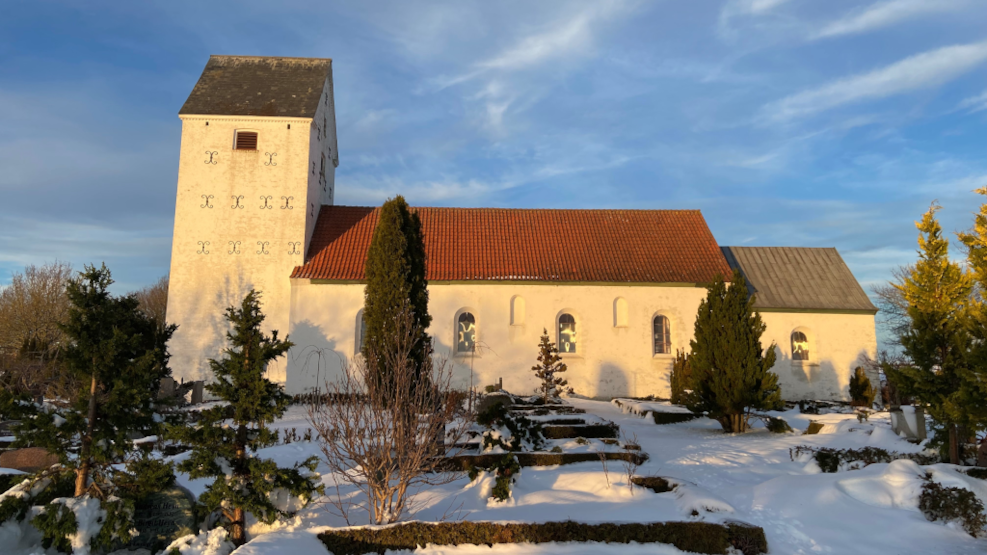
Ørridslev Church
Beautifully situated amidst fields near Hovedgård is one of Denmark's oldest churches, known especially for its well-preserved frescoes, which are among the oldest in the country. Ørridslev Church is among the largest village churches in the region - a rich church in a historically rich area.
An intriguing church with many unknowns
Ørridslev Church is surrounded by a certain mystique. Why does one of Denmark's oldest and largest rural churches stand in the middle of nowhere, surrounded by fields where historically there hasn't been a village? Perhaps it was built on the site of a chieftain's estate or a sacred place during the Viking Age. Maybe there was a pilgrimage route from the monasteries in Horsens to the church. However, these are mere speculations, as very little is known about the early period of the church.
Constructed in the first half of the 12th century, Ørridslev Church is mentioned in records from the 1300s, with the church itself mentioned in the 1400s. In 1435, the church paid the highest tax among the churches in the district, indicating prosperous financial conditions.
After the Reformation in 1536, the church was taken over by the King. Subsequently, it was owned by various estates in the area, including Hoved, which gave its name to the town of Hovedgård northeast of the church, as well as Tyrrestrup, Stensballegaard, and Frijsenborg. In 1921, the church became self-owned.
About the Church
The beautiful whitewashed church consists of an original choir and nave, built in rubble stone. The masonry still stands strong after 900 years. The tower is quite large and only connected to the church through a door in 1959. Until then, the tower had been used as a stable for the priest's horses for several centuries. The tower and porch were added around the year 1500 - the porch in red monk stones, which stand out vividly in the otherwise whitewashed church.
The church's oldest interior is the baptismal font, likely original. The granite font is in an unusual and characteristic Romanesque style with inspiration from English church art around the year 1100. The rest of the church's interior is from the 1500s and later, featuring some interesting church art.
The most famous and historically significant aspect of the church is undoubtedly...
The Famous Frescoes
Inside the church, in the chancel arch, you can see the famous frescoes of Cain and Abel and God. They are dated to 1125, and interestingly, they are believed to have been painted by the Jelling Workshop, as they share common features with the frescoes in Jelling Church and Tamdrup Church, both churches associated with Viking Age kings. These frescoes are among the oldest in the country, as most frescoes from that time have disappeared over the years. Abel's face, in particular, is so remarkably well-preserved that it has been featured on the cover of the Danish Illustrated Bible on Frescoes.
The motif is Cain and Abel offering sacrifices to God. Abel sacrifices a lamb, and Cain offers grain. God accepts Abel's offering but not Cain's. God is depicted within a circle in the rainbow in the center of the chancel arch.
Above the chancel arch, remnants of other Romanesque frescoes can be seen, likely depicting Jesus and the apostles, but these have been affected by past renovations.
On the vaults, decorative frescoes from around 1500 can be observed.
Planning to Visit Ørridslev Church?
Note: Ørridslev Church is currently undergoing renovations and is temporarily closed to visitors. The church is expected to reopen on May 1st 2024.
Under normal circumstances, the church is open from 8 AM to 4 PM every day of the week, allowing visitors the opportunity to enter and view the frescoes. However, the church may be in use for worship services and other religious ceremonies.